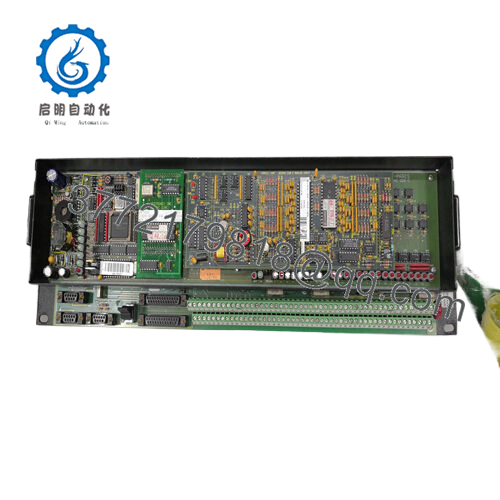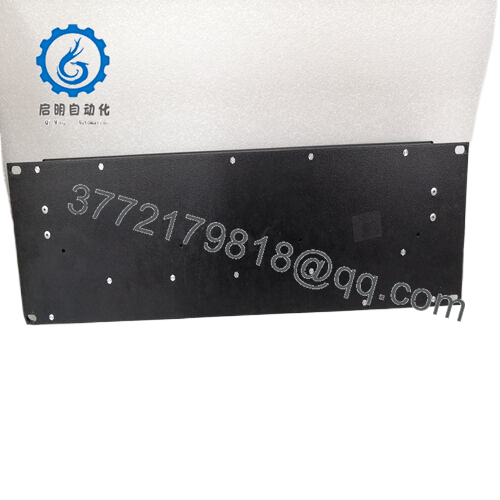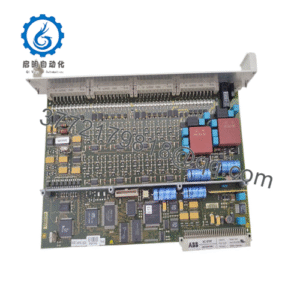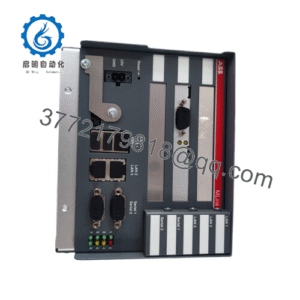Description
| Model Number | WESTERM D20C |
| Brand | GE (General Electric) |
| Type | Central Controller (WESTERM D20 DCS Compatible) |
| Input Voltage | +24 V DC (from WESTERM D20 controller rack power supply) |
| Operating Temp Range | 0 °C to +55 °C (+32 °F to +131 °F) |
| Mounting Style | WESTERM D20 Controller Rack Mount (1/2 rack width, 3U height) |
| Dimensions | 178 mm (width) x 100 mm (height) x 203 mm (depth) |
| Weight | 1.2 kg (2.65 lbs) |
| Interface/Bus | WESTERM D20 Proprietary Serial Bus (for I/O communication); RS-232 (for HMI/configuration) |
| Compliance | CE, UL 508, IEC 61508 (SIL 2), RoHS |
| Supported Protocols | WESTERM D20 I/O Bus Protocol; Modbus RTU (optional, for third-party device integration) |
| Typical Power Draw | 8.5 W (operating), 2.1 W (standby) |
| Control Capacity | Up to 128 I/O points; 64 PID control loops |

WESTERM D20C
Manufacturer: GE Fanuc
Product No.: WESDAC D20 C
Condition: In stock
Product Type: Analog Digital l/0 Module
Product Origin: USA
Payment:T/T, Western Union
Weight: 1542g
Shipping port: Xiamen
Warranty:12 months
The GE WESTERM D20C serves as the “brain” of the WESTERM D20 DCS, acting as the central processing unit that executes control logic, processes data from I/O modules, and coordinates communication across the system. Designed to match the form factor and electrical footprint of original WESTERM D20 controllers, it mounts directly into standard WESTERM D20 controller racks (compatible with both single and redundant configurations) and communicates with I/O racks via the system’s proprietary serial bus—no rewiring or rack modifications required. Its primary role is to process real-time data from connected I/O modules (e.g., analog inputs for temperature, digital inputs for switch states) using preconfigured control algorithms (PID loops, interlocks, sequence logic) to generate output signals that regulate field devices (valves, pumps, motors).

WESTERM D20C
What sets the GE WESTERM D20C apart from its legacy predecessors is its enhanced processing power: equipped with a 32-bit microprocessor (vs. 16-bit in older models), it handles 50% more control loops simultaneously and reduces data processing latency by up to 30%—critical for fast-response applications like turbine speed control. It also includes expanded non-volatile memory for storing control programs and historical data, eliminating the risk of program loss during power outages. For teams managing legacy DCS, this means the GE WESTERM D20C delivers modern performance with the familiarity of the original controller—engineers can use existing WESTERM configuration tools (e.g., WESTERM D20 Programmer) to set up control logic without learning new software.
Main features and advantages:
Choosing the GE WESTERM D20C delivers transformative value by avoiding the prohibitive cost of replacing a WESTERM D20 DCS. For a large coal-fired power plant, a full DCS replacement could exceed $1 million—whereas upgrading to the GE WESTERM D20C allows the plant to retain existing I/O modules, wiring, and operator training, cutting upgrade costs by 70%. The controller’s enhanced processing power also directly improves operational efficiency: in a petrochemical refinery, faster loop execution from the GE WESTERM D20C enables tighter control of distillation column temperatures, reducing energy consumption by up to 6% compared to slower legacy controllers.
Another critical benefit is safety and compliance. The GE WESTERM D20C is certified to SIL 2 (per IEC 61508), making it suitable for safety-related control functions like emergency shutdown (ESD) systems or pressure relief valve actuation—essential for industries like oil and gas where safety failures carry catastrophic risks. Its backward compatibility also simplifies compliance audits: since it uses the same control logic structure as original WESTERM controllers, facilities can maintain historical data continuity for regulatory reporting (e.g., EPA emissions tracking) without revalidating processes. For 24/7 operations like wastewater treatment plants, the GE WESTERM D20C’s reliability (MTBF of 100,000+ hours) minimizes unplanned downtime—critical for processes that cannot be paused without environmental or public health impacts.
Application fields:
The GE WESTERM D20C is deployed exclusively in facilities operating GE WESTERM D20 DCS, with a focus on industries where legacy control systems are too costly or risky to replace. In power generation—specifically coal, gas, and biomass plants—it serves as the primary controller for boiler and turbine systems: it processes data from GE WESDAC D20A0511-01010 analog input modules (monitoring steam pressure, feedwater flow) and executes PID loops to adjust fuel supply and valve positions, ensuring efficient power output and preventing equipment damage. In petrochemical refining, the controller manages distillation and cracking processes: it coordinates with digital I/O modules to monitor valve positions and analog modules to track fluid temperatures, maintaining product quality and complying with safety standards (e.g., API 556). It also finds application in heavy manufacturing—such as steel or cement production—where it regulates kiln temperatures and conveyor speeds, its enhanced processing power handling the complex, multi-loop control required for consistent product output. In all these use cases, the GE WESTERM D20C excels at delivering reliable, backward-compatible control, ensuring legacy DCS systems remain viable and efficient.
Related products:
GE WESTERM D20CR – Redundant variant of the GE WESTERM D20C for mission-critical applications (e.g., nuclear power auxiliary systems), providing automatic failover.
GE WESTERM D20C-EXT – Extended-temperature variant (-20 °C to +65 °C) for outdoor or harsh environments like offshore oil platforms or desert solar plants.
GE WESDAC D20A0511-01010 – Analog input module (8 channels) optimized for pairing with GE WESTERM D20C to collect sensor data in WESTERM D20 systems.
GE WESTERM D20D – Digital output module (16 channels) for GE WESTERM D20C, used to control actuators and valves based on controller logic.
GE WESTERM D20C-OLD – Legacy predecessor of the GE WESTERM D20C (16-bit processor), still compatible but lacking enhanced performance.
GE WESTERM D20HMI – Operator interface terminal (HMI) for GE WESTERM D20C, providing real-time status monitoring and manual control capabilities.
GE WESTERM D20L – Communication link module for GE WESTERM D20C, enabling data transfer to SCADA systems via Modbus RTU.
GE WESTERM D20P – Power supply module for WESTERM D20 controller racks, ensuring stable +24 V DC input for the GE WESTERM D20C.
Installation and maintenance:
Before installing the GE WESTERM D20C, verify that the WESTERM D20 controller rack is compatible with 1/2-width modules and that the rack’s power supply can deliver stable +24 V DC (±5% tolerance)—fluctuations outside this range can damage the controller. Power down the entire controller rack before installation: the WESTERM D20 bus is not hot-swappable, so live insertion will corrupt I/O communication and potentially damage connected modules. Back up the existing controller’s configuration using WESTERM D20 Programmer software before removal—this ensures you can restore control logic to the GE WESTERM D20C quickly if issues arise. Check the serial bus connections between the controller rack and I/O racks: clean corrosion from terminals with isopropyl alcohol and ensure cables are shielded to prevent noise interference. Prior to powering on, confirm that all connected I/O modules (e.g., GE WESDAC D20A0511-01010) are compatible with the GE WESTERM D20C (refer to GE’s compatibility matrix) to avoid communication errors.
For ongoing maintenance, conduct weekly checks of the controller’s status LEDs (located on the front panel): a solid green LED indicates normal operation, a flashing green LED signals bus communication, and a red LED alerts to critical faults (e.g., power loss, memory failure). Use the WESTERM D20 HMI to monitor controller performance metrics—such as CPU load and loop execution time—aiming to keep CPU usage below 70% to prevent latency issues. Inspect the controller’s cooling vents monthly for dust buildup: in dusty environments (e.g., cement plants), use compressed air to clean vents, as overheating can reduce reliability. Every year, back up the controller’s configuration to a secure, off-site location and update the firmware (available on GE’s legacy support portal) to address known bugs—always test firmware updates on a spare controller first to avoid disrupting operations. If the GE WESTERM D20C fails, replace it with another certified unit; avoid using non-GE controllers, as they will not integrate with the WESTERM D20 bus and may cause system-wide outages.
Other GE product models:
GE IS420UCSBH4A
GE IS220UCSAH1A
GE V7768-320000
GE 705-1512-01
GE IC754VGL06CTD ES0622
GE IC698CRE040-HN
GE MIVII1000E00HI00
GE 745-W2-P5-G5-LO-A-L-R-E
GE IS220PDIOH1A
GE IS200VVIBH1C
GE 350-E-P1-G1-H-E-S-C-P-2E-D-N
GE 239-RTD-AN
GE 239-RTD-AN
GE IS215VPROH1B
GE VMIVME-7807
GE VMIACC-5595
GE IS215VPROH1B
GE 469-P5-HI-A20-E-H
GE 869-E-P5-P5-B5-H-S-S-A-LN-M-M-P-F-BSE-N
GE F650-B-F-J-F-2-G-1-HI-E
GE IC695CPE305LT-ABAD
GE IC754VSL06CTD
GE IOC-555-D
GE IS200JPDGH1A
GE IS420PPDAH1B
GE IS200ERRRH1A
GE F650BFDF2G0HICE
GE DS200TCPDG2B
GE IS415UCVHH1A
GE AT868-1-1-2-0
GE IS215VPROH2B

 WhatsApp: +86 16626708626
WhatsApp: +86 16626708626 Email:
Email:  Phone: +86 16626708626
Phone: +86 16626708626


